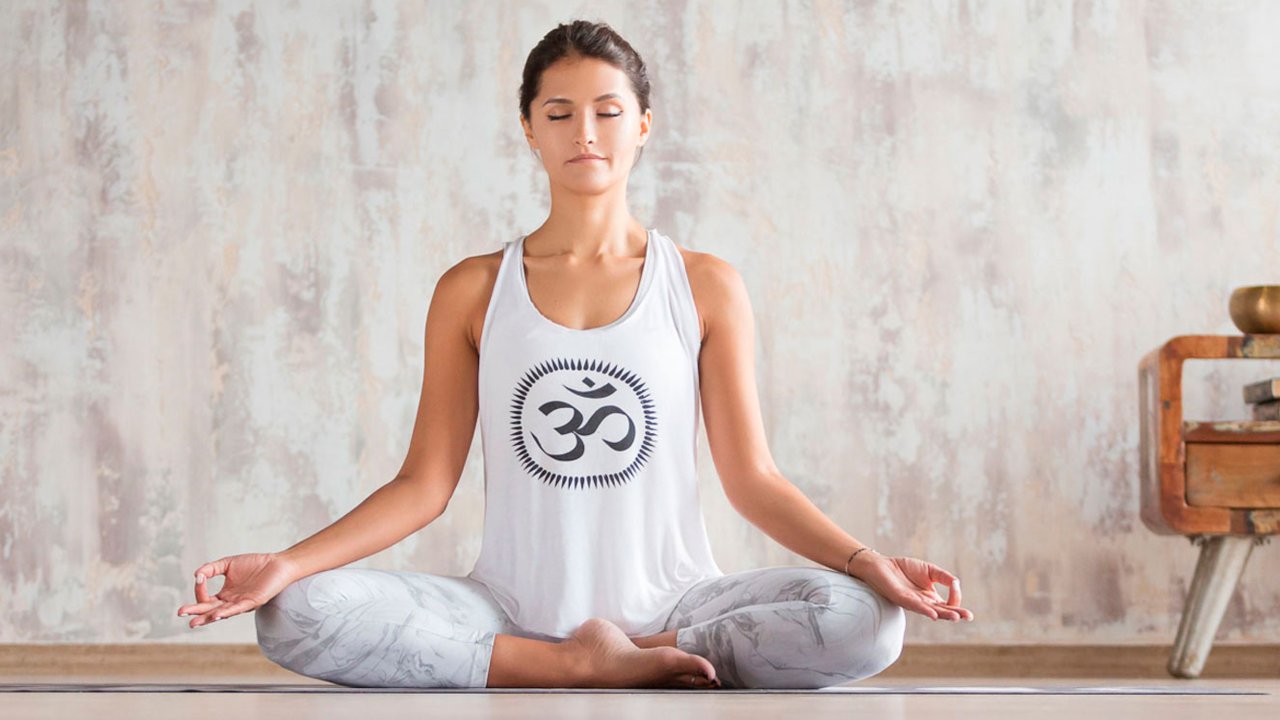Yoga for Stress Relief: Techniques to Find Inner Peace
Yoga is a holistic practice that has been embraced for thousands of years, offering a broad spectrum of benefits, with stress relief being one of its most profound. Whether you’re just starting out or have some experience with yoga, delving into its core principles can reveal valuable insights into how it helps manage and alleviate stress. 
By incorporating various elements of yoga into your daily life, you can cultivate a deeper sense of calm and resilience. Here’s an introduction to how yoga can play a transformative role in stress relief:
What is Yoga?
Yoga is an ancient practice that originated in India, intricately weaving together physical postures (asanas), breath control (pranayama), and meditation (dhyana) to enhance overall well-being.
This practice is more than just a series of movements; it is a comprehensive approach to health that aims to create balance and harmony in the body and mind.
The term “yoga” itself translates to “union” or “to join,” symbolizing the process of harmonizing the physical, mental, and spiritual aspects of the self.
What Is Stress?
Stress is a natural physiological and psychological response to demands or challenges that disrupt an individual’s equilibrium. It can be triggered by various factors, such as work pressure, personal relationships, or life changes.
Stress can be acute, occurring in response to a specific event, or chronic, persisting over a longer period. While stress is a normal part of life and can even be motivating, excessive or prolonged stress can have significant negative effects on both physical and mental health.
Physical and Mental Impact of Stress
1. Physical Impact:
- Cardiovascular System: Chronic stress can lead to increased heart rate and blood pressure, heightening the risk of cardiovascular diseases.
- Musculoskeletal System: Stress often causes muscle tension, leading to headaches, back pain, and neck stiffness.
- Immune System: Prolonged stress can weaken the immune system, making the body more susceptible to infections and illnesses.
- Digestive System: Stress may cause gastrointestinal issues such as indigestion, ulcers, or irritable bowel syndrome.
2. Mental Impact:
- Anxiety and Depression: Persistent stress is a major risk factor for developing anxiety disorders and depression.
- Cognitive Function: Stress can impair concentration, memory, and decision-making abilities.
- Emotional Regulation: Chronic stress can lead to mood swings, irritability, and difficulty managing emotions effectively.
How Yoga Helps Relieve Stress
Yoga offers a multifaceted approach to managing and alleviating stress through its unique combination of physical postures, breathing techniques, and mental focus.
1. Mind-Body Connection in Yoga
Yoga emphasizes the integration of body and mind, fostering a deeper awareness of both physical and emotional states. Through mindful movements and precise alignment, practitioners become more attuned to how stress manifests in their bodies.
This heightened awareness helps in identifying areas of tension and discomfort. By addressing and releasing this physical tension, practitioners experience enhanced relaxation. As a result, yoga promotes greater mental clarity and overall well-being.
2. Breath Control in Yoga
Breath control, or pranayama, is a key element of yoga that focuses on the conscious regulation of the breath. Techniques like deep diaphragmatic breathing and alternate nostril breathing activate the parasympathetic nervous system, countering the stress-induced “fight or flight” response.
This practice promotes slower, deeper breathing, which helps to lower cortisol levels and reduce heart rate. As a result, yoga induces a state of calm and relaxation.
The Science Behind Yoga and Stress Relief
Research into yoga and stress relief has revealed several mechanisms through which yoga practice benefits mental and physical health:
- Neurobiological Effects: Studies have shown that yoga practice can influence brain activity, particularly in areas associated with stress regulation, such as the prefrontal cortex and amygdala. Yoga can enhance the brain’s ability to manage stress and regulate emotions.
- Hormonal Balance: Yoga helps to lower cortisol levels, a hormone released in response to stress. Reduced cortisol levels contribute to a decrease in overall stress and anxiety.
- Autonomic Nervous System Regulation: Yoga practices promote a shift from the sympathetic nervous system (responsible for the stress response) to the parasympathetic nervous system (associated with relaxation and recovery).
- Psychological Benefits: Regular yoga practice has been linked to improved mood, reduced symptoms of anxiety and depression, and enhanced overall psychological well-being.
By understanding the intricate ways yoga addresses stress, you can better appreciate its value as a powerful tool for achieving and maintaining mental and physical balance.
Yoga Poses for Immediate Stress Relief
These yoga poses are effective for quickly alleviating stress and promoting relaxation. They help to calm the mind, release physical tension, and improve overall well-being.
1. Child’s Pose (Balasana)
Child’s Pose is a gentle, restorative pose that helps to soothe the nervous system and release tension in the back and shoulders. By kneeling and resting your forehead on the mat with your arms extended forward, you create a deep sense of calm and relaxation.
How to Do It:
- Kneel on the mat with your big toes touching and knees spread apart.
- Sit back on your heels and extend your arms forward, lowering your chest toward the floor.
- Rest your forehead on the mat and relax your shoulders.
Benefits:
- Calms the mind and relieves stress.
- Stretches the back, hips, and thighs.
- Promotes deep, soothing breaths.
2. Cat-Cow Pose (Marjaryasana-Bitilasana)
Cat-Cow Pose is a dynamic movement that alternates between arching and rounding the spine. This flow helps to mobilize the spine, release tension, and enhance flexibility, which can be very effective for reducing stress.
How to Do It:
- Start on your hands and knees with your wrists under your shoulders and knees under your hips.
- Inhale and arch your back (Cow Pose), lifting your tailbone and head.
- Exhale and round your spine (Cat Pose), tucking your chin and drawing your belly button towards your spine.
- Repeat this flow with your breath.
Benefits:
- Releases tension in the back and neck.
- Increases spinal flexibility and range of motion.
- Encourages relaxation through rhythmic movement and deep breathing.
3. Legs-Up-The-Wall Pose (Viparita Karani)
Legs-Up-The-Wall Pose involves lying on your back with your legs extended up a wall. This restorative pose reverses blood flow, helps to calm the mind, and alleviates tension in the legs and lower back.
How to Do It:
- Sit next to a wall and lie on your back, swinging your legs up the wall.
- Keep your hips close to the wall and relax your arms by your sides, palms up.
- Close your eyes and stay in this position for several minutes.
Benefits:
- Reduces anxiety and promotes relaxation.
- Relieves fatigue and tension in the legs and lower back.
- Improves circulation and reduces swelling in the lower body.
4. Corpse Pose (Savasana)
Corpse Pose is a final relaxation pose that encourages complete stillness and relaxation. It helps to deeply relax the body and mind, making it a powerful tool for stress relief and mental clarity.
How to Do It:
- Lie flat on your back with your legs extended and arms relaxed by your sides, palms facing up.
- Close your eyes and focus on your breath.
- Remain in this position for 5-10 minutes, or as long as needed.
Benefits:
- Provides deep relaxation and stress relief.
- Calms the nervous system and promotes rejuvenation.
- Enhances mindfulness and mental clarity.
These poses can be integrated into your daily routine or used as a quick practice to manage stress and promote a sense of calm.
5. Forward Bend Pose (Uttanasana)
Forward Bend Pose, or Uttanasana, is a simple yet powerful pose that involves folding forward from the hips. It helps to calm the mind, stretch the hamstrings, and release tension in the neck and shoulders.
How to Do It:
- Stand with your feet hip-width apart and your arms relaxed by your sides.
- Inhale and lengthen your spine. As you exhale, hinge at your hips and fold forward, bringing your torso towards your legs.
- Allow your head and neck to relax, and reach towards the floor or your shins.
- Hold the position for several breaths, then slowly rise back up on an inhale.
Benefits:
- Calms the Mind: The forward fold helps to soothe the nervous system and reduce anxiety.
- Stretches the Hamstrings: It provides a deep stretch to the hamstrings and lower back.
- Relieves Neck and Shoulder Tension: The pose helps to relax and release tension from the neck and shoulders.
Forward Bend Pose can be a quick and effective way to alleviate stress, especially when practiced with slow, mindful breathing.
Breathing Techniques for Stress Management
Breathing techniques are an integral part of yoga that can significantly aid in managing and reducing stress. By focusing on the breath, you can activate the body’s relaxation response and bring a sense of calm to your mind.
1. Alternate Nostril Breathing (Nadi Shodhana)
Alternate Nostril Breathing is a technique that balances the energy channels in the body and calms the mind. It involves breathing through one nostril at a time while using the fingers to alternate nostril blockage.
How to Do It:
- Sit comfortably with your spine straight.
- Use your right thumb to close off your right nostril.
- Inhale deeply and slowly through your left nostril.
- Close your left nostril with your ring finger, and release your right nostril.
- Exhale slowly through the right nostril.
- Inhale through the right nostril, then close it and exhale through the left nostril.
- Continue this pattern for several minutes.
Benefits:
- Balances Energy: Helps to harmonize the left and right sides of the brain and balance energy flow.
- Reduces Stress: Calms the mind and nervous system by regulating the breath.
- Improves Focus: Enhances mental clarity and concentration.
2. Deep Belly Breathing
Deep Belly Breathing, or diaphragmatic breathing, focuses on breathing deeply into the abdomen rather than shallowly into the chest. This technique promotes relaxation and helps reduce stress.
How to Do It:
- Sit or lie down comfortably.
- Place one hand on your chest and the other on your abdomen.
- Inhale deeply through your nose, allowing your abdomen to rise and fill with air.
- Exhale slowly through your mouth, feeling your abdomen fall.
- Continue this deep, rhythmic breathing for several minutes.
Benefits:
- Activates Relaxation Response: Engages the diaphragm and promotes a sense of calm.
- Reduces Anxiety: Helps lower heart rate and blood pressure.
- Enhances Oxygenation: Improves the efficiency of oxygen delivery throughout the body.
Meditation in Yoga for Calming the Mind
Meditation is a core aspect of yoga practice that helps calm the mind and promote mental clarity. Different types of meditation can be used depending on personal preference and goals.
Guided Meditation vs. Silent Meditation
1. Guided Meditation: Guided Meditation involves listening to a narrator or guide who provides instructions and prompts throughout the meditation. This type of meditation is particularly useful for beginners and those seeking structure.
Benefits:
- Provides Direction: Offers clear guidance and support, making it easier to stay focused.
- Enhances Relaxation: Often includes visualizations or soothing descriptions to aid in deep relaxation.
- Reduces Mental Clutter: Helps direct the mind away from stress and towards a peaceful state.
2. Silent Meditation: Silent Meditation, or self-guided meditation, involves sitting quietly and focusing on your own breath, thoughts, or a mantra without external guidance. This practice fosters self-awareness and inner peace.
Benefits:
- Promotes Independence: Encourages self-reliance and internal focus.
- Deepens Awareness: Allows for a deeper exploration of personal thoughts and feelings.
- Enhances Mindfulness: Strengthens the ability to remain present and aware without external influence.
Incorporating Yoga into Your Daily Routine
Integrating yoga into your daily life can significantly enhance your overall well-being and help manage stress. Establishing a consistent practice involves setting aside time for yoga in the morning or evening, based on what suits you best.
1. Morning Yoga Routine
A morning yoga routine can help you start your day with energy and focus. It sets a positive tone for the day and prepares both your mind and body for the activities ahead.
Suggestions:
- Start with Gentle Stretching: Begin with poses like Cat-Cow and Forward Bend to wake up your body and improve flexibility.
- Incorporate Sun Salutations: Sun Salutations (Surya Namaskar) can energize and warm up your entire body.
- Practice Breathwork: Use deep belly breathing or Alternate Nostril Breathing to center your mind and enhance mental clarity.
- End with a Short Meditation: A few minutes of meditation can set a calm and focused mindset for the day.
Example Routine:
- Child’s Pose (Balasana) – 2 minutes
- Sun Salutations (Surya Namaskar) – 5 minutes
- Cat-Cow Pose (Marjaryasana-Bitilasana) – 2 minutes
- Deep Belly Breathing – 3 minutes
- Guided Meditation – 5 minutes
2. Evening Yoga Routine
An evening yoga routine can help you unwind and relax after a busy day. It prepares your body and mind for restful sleep and can be a calming way to transition into the evening.
Suggestions:
- Focus on Relaxation Poses: Include poses like Legs-Up-The-Wall and Child’s Pose to release the day’s tension.
- Incorporate Gentle Stretching: Gentle stretches, such as Forward Bend Pose and gentle twists, help to ease muscle tightness.
- Practice Slow Breathing: Use breathwork techniques like Deep Belly Breathing to calm the nervous system.
- End with a Relaxing Meditation: A brief meditation session can help quiet the mind and promote restful sleep.
Example Routine:
- Legs-Up-The-Wall Pose (Viparita Karani) – 5 minutes
- Child’s Pose (Balasana) – 3 minutes
- Forward Bend Pose (Uttanasana) – 2 minutes
- Deep Belly Breathing – 3 minutes
- Silent Meditation – 5 minutes
Creating a Relaxing Yoga Environment
A well-designed yoga environment enhances your practice by promoting relaxation and focus. Here’s how to create a calming space for your yoga practice.
1. Yoga Props and Tools
Description: Using yoga props and tools can make your practice more comfortable and effective. They support proper alignment, assist in deepening poses, and provide stability.
Suggestions:
- Yoga Mat: Invest in a good-quality, non-slip yoga mat for comfort and safety.
- Yoga Blocks: Useful for providing support and modifying poses to suit your level.
- Straps: Help with stretching and achieving better alignment in poses.
- Bolsters and Blankets: Provide support and comfort, especially in restorative poses.
Benefits:
- Enhances Comfort: Props help make poses more accessible and comfortable.
- Improves Alignment: Supports proper alignment and technique.
- Increases Accessibility: Makes it easier to modify poses based on your flexibility and experience level.
2. Lighting and Ambiance
Description: The right lighting and ambiance can greatly affect your yoga practice, creating a serene and inviting environment.
Suggestions:
- Soft Lighting: Use dim or soft lighting to create a calming atmosphere. Consider using candles or a salt lamp for a soothing effect.
- Natural Light: If possible, practice near a window to benefit from natural light, which can enhance your mood and energy levels.
- Calming Colors: Decorate your practice space with calming colors like soft blues or greens to promote relaxation.
- Aromatherapy: Consider using essential oils or incense to add a relaxing scent to your space.
Benefits:
- Promotes Relaxation: Soft lighting and calming colors help to create a peaceful atmosphere.
- Enhances Focus: A well-designed space helps you concentrate and fully engage in your practice.
- Sets the Mood: The right ambiance supports a positive mindset and relaxation.
By incorporating these practices into your daily routine and creating a relaxing environment, you can enhance the benefits of yoga and foster a more balanced, stress-free life.
Yoga for Long-Term Stress Reduction
Yoga is not only effective for immediate stress relief but also plays a significant role in long-term stress management. Regular practice can help build resilience to stress, improve overall well-being, and foster a balanced lifestyle.
Benefits of Long-Term Yoga Practice:
- Enhanced Resilience: Regular yoga practice strengthens the body and mind, making you more resilient to stress.
- Improved Stress Response: Over time, yoga helps regulate the stress response, leading to more effective stress management.
- Better Sleep: Consistent practice can improve sleep quality, which is crucial for managing stress and overall health.
- Emotional Balance: Yoga fosters emotional stability and a positive outlook, helping you handle stress more effectively.
Tips for Long-Term Practice:
- Establish a Routine: Aim for a regular practice schedule, even if it’s just a few minutes a day.
- Set Realistic Goals: Focus on gradual progress rather than perfection.
- Listen to Your Body: Modify your practice based on how your body feels each day.
Combining Yoga with Other Stress-Relief Techniques
Integrating yoga with other stress-relief methods can enhance its effectiveness and provide a more comprehensive approach to managing stress.
1. Yoga and Aromatherapy: Aromatherapy involves using essential oils to promote physical and emotional well-being. Combining aromatherapy with yoga can create a more immersive and calming experience.
How to Combine:
- Essential Oils: Use calming essential oils like lavender, chamomile, or sandalwood during your practice. Diffuse these oils in your practice space or apply a few drops to your wrists or temples.
- Scented Candles: Light scented candles with relaxing fragrances to enhance the ambiance and deepen relaxation.
Benefits:
- Enhances Relaxation: The soothing scents of essential oils can amplify the calming effects of yoga.
- Improves Mood: Aromatherapy can elevate mood and reduce anxiety.
- Creates a Multi-Sensory Experience: Combining scent with movement and breathwork enriches the practice.
2. Yoga and Music: Music can influence your mood and enhance your yoga practice. Choosing the right type of music can help deepen relaxation and focus.
How to Combine:
- Calming Music: Play gentle, instrumental music or nature sounds during your practice to create a serene environment.
- Mantras and Chants: Incorporate soothing mantras or chants to enhance meditation and mindfulness.
Benefits:
- Promotes Calmness: Soft, calming music can help lower stress levels and create a peaceful practice space.
- Enhances Focus: Music can help you stay present and focused during your practice.
- Improves Enjoyment: Music can make your practice more enjoyable and engaging.
Diet and Lifestyle Tips for Reducing Stress
In addition to yoga, maintaining a healthy diet and lifestyle plays a crucial role in managing stress effectively.
Diet Tips:
- Balanced Nutrition: Eat a diet rich in fruits, vegetables, whole grains, and lean proteins to support overall health and stress resilience.
- Stay Hydrated: Drink plenty of water throughout the day to stay hydrated and support bodily functions.
- Limit Caffeine and Sugar: Reduce intake of caffeine and sugar, which can contribute to increased stress and anxiety.
Lifestyle Tips:
- Regular Exercise: Complement your yoga practice with other forms of physical activity to boost overall well-being.
- Adequate Sleep: Aim for 7-9 hours of quality sleep per night to help the body recover and manage stress.
- Mindfulness Practices: Incorporate mindfulness and relaxation techniques into your daily routine to maintain a calm and focused mind.
Common Mistakes to Avoid When Practicing Yoga
Avoiding common mistakes can help you make the most of your yoga practice and enhance its stress-relieving benefits.
1. Overexertion:
- Mistake: Pushing yourself too hard in poses or trying to achieve advanced postures too quickly.
- Solution: Listen to your body and practice within your limits. Focus on gradual progress and respect your body’s signals.
2. Neglecting Breath Awareness:
- Mistake: Ignoring the importance of breathwork during your practice.
- Solution: Incorporate conscious breathing into your practice to enhance relaxation and stress relief.
3. Skipping Warm-Up or Cool-Down:
- Mistake: Failing to include warm-up or cool-down routines in your practice.
- Solution: Always start with gentle stretches and end with relaxation poses to prevent injury and promote overall well-being.
4. Inconsistent Practice:
- Mistake: Practicing yoga sporadically rather than consistently.
- Solution: Establish a regular practice schedule to build resilience to stress and gain the long-term benefits of yoga.
5. Comparing Yourself to Others:
- Mistake: Comparing your practice to others or striving for perfection.
- Solution: Focus on your personal journey and progress. Yoga is about self-discovery and improvement, not comparison.
By addressing these common mistakes and incorporating yoga with complementary techniques, diet, and lifestyle adjustments, you can create a robust framework for long-term stress management and overall well-being.
FAQs
1. How often should I practice yoga for stress relief?
To experience the full benefits of yoga for stress relief, aim to practice regularly. Ideally, practicing yoga for 15-30 minutes a day can be very effective. However, even shorter sessions a few times a week can provide significant benefits. Consistency is key, so find a routine that fits your schedule and stick with it.
2. Can I do yoga if I’m new to exercise or have physical limitations?
Yes, yoga can be adapted to accommodate various levels of fitness and physical limitations. Start with gentle poses and modifications, and use props like blocks and straps for support. It’s always a good idea to consult with a healthcare provider or a certified yoga instructor who can guide you in creating a practice tailored to your needs.
3. How can I make my yoga practice more relaxing?
To enhance relaxation during your practice, create a calming environment with soft lighting, soothing music, and calming scents like lavender. Focus on deep, mindful breathing and incorporate relaxation poses such as Child’s Pose or Legs-Up-The-Wall. Additionally, ending your practice with a few minutes of meditation can help deepen the relaxation.
4. What are the benefits of combining yoga with other stress-relief techniques?
Combining yoga with other techniques, such as aromatherapy and music, can enhance the overall stress-relief experience. Aromatherapy can soothe your senses and improve relaxation, while calming music can create a peaceful atmosphere. Integrating these practices with yoga helps to create a multi-sensory experience that supports deeper relaxation and stress management.
5. Can yoga alone effectively manage stress, or should it be combined with other strategies?
Yoga is a powerful tool for managing stress, but combining it with other strategies can provide a more comprehensive approach. Alongside yoga, incorporating a balanced diet, regular physical activity, and mindfulness practices can enhance your ability to manage stress. A holistic approach that includes multiple strategies often yields the best results for long-term stress relief.
6. What types of yoga are best for stress relief?
For stress relief, styles of yoga that emphasize relaxation and mindfulness are particularly beneficial. Hatha yoga, which focuses on slow, deliberate movements and breathing, is great for beginners. Restorative yoga, which uses props to support the body in gentle poses, is excellent for deep relaxation. Yoga Nidra, a form of guided meditation, can also be highly effective for reducing stress.
7. How long does it take to see the benefits of yoga for stress relief?
The timeline for experiencing the benefits of yoga can vary from person to person. Many people notice an immediate sense of calm and relaxation after just one session. For more profound long-term benefits, such as improved stress management and emotional balance, it typically takes a few weeks of regular practice. Consistency is important to fully realize these benefits.
8. Can yoga help with stress-related physical symptoms like headaches or tension?
Yes, yoga can help alleviate stress-related physical symptoms such as headaches, neck tension, and muscle tightness. Poses that focus on stretching and relieving tension, such as Forward Bend Pose or Cat-Cow Pose, can provide relief. Additionally, breathing exercises and meditation can help reduce overall stress levels, which may contribute to a decrease in physical symptoms.
9. Is it necessary to have a yoga mat, or can I practice yoga without one?
While a yoga mat is not strictly necessary, it provides several benefits, such as cushioning for your joints and a non-slip surface for safety. If you don’t have a yoga mat, you can practice on a soft surface like carpet or a thick towel. However, using a mat is recommended to ensure comfort and stability during your practice.
10. How can I stay motivated to practice yoga regularly?
Staying motivated can be challenging, but there are several strategies that can help. Setting specific goals, such as improving flexibility or reducing stress, can provide direction and purpose. Creating a dedicated practice space and incorporating yoga into your daily routine can make it easier to stick with it. Additionally, joining a yoga class or community can offer support and accountability. Remember to be patient with yourself and celebrate small milestones along the way.
Combining yoga with other stress-relief practices, such as aromatherapy and music, can deepen the impact of your practice and provide a richer, more holistic approach to stress management.


























I recharge my body and keep healthy n fit with the help of yoga.
Yoga gives a physical and mental benefits. yoga helps in physical and mental problems
with the help of asanas.
There are multiple benefits of Yoga, in simple words we can say it gives psychological, physical, biochemical benefits.
Those who want to live a healthy, fit and active life should certainly include yoga in their daily routine. From more than centuries of years people have benefited from yoga. So why should you miss out, take advantages of the benefits of yoga to live healthy life.